Meet the Southern Yellow-billed Hornbill
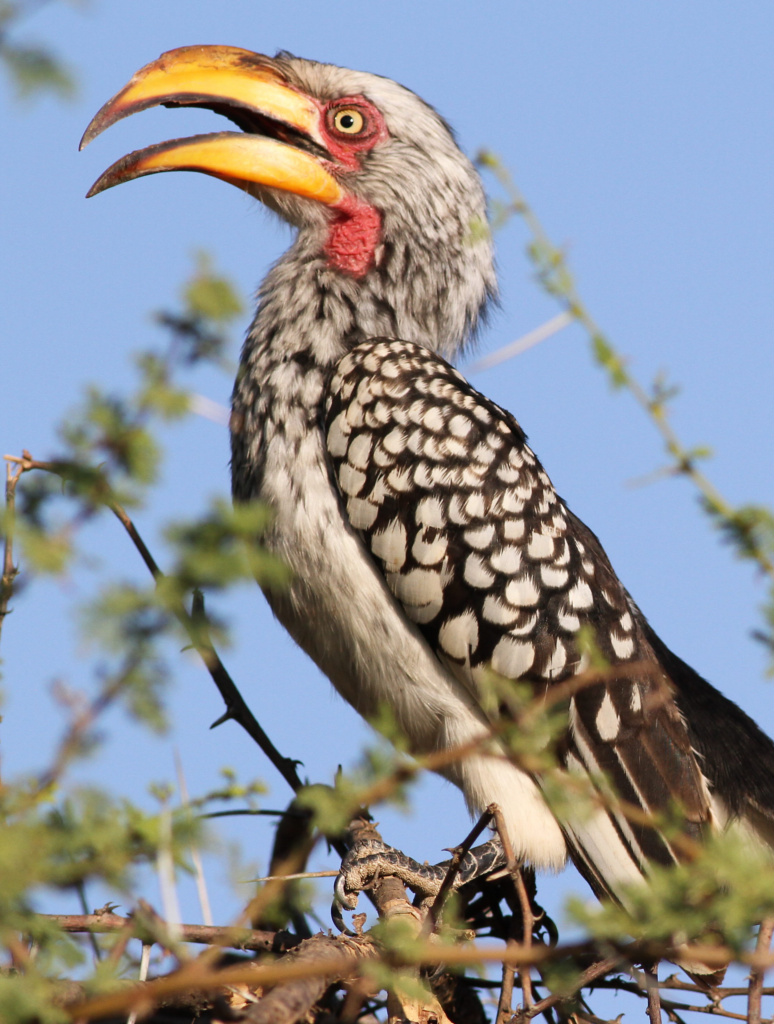
The southern yellow-billed hornbill (Tockus leucomelas) has a long yellow decurved beak, males have a casque above. They have bare red skin around and below the eyes, as well as at the base of the bill. Their eyes are yellow. They have a dark grey forehead and grey at the center of the crown, extending to the nape. Head sides are whitish. Short strong legs and feet are dark grey. The upper parts are black, heavily spotted with white scales on the wings. The back, rump, and long tail are black. Flight feathers are greyish brown, with white edges. Underparts are paler. The neck is white spotted with dark grey, the upper breast is slightly streaked black.
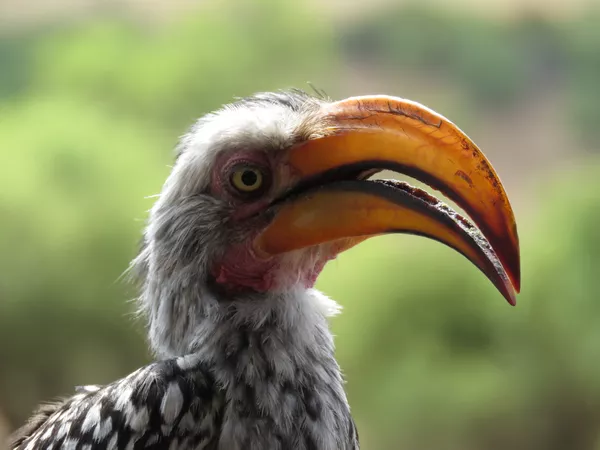
The belly is white. Undertail coverts are white.
Females can be separated from males by lacking the casque on the beak.
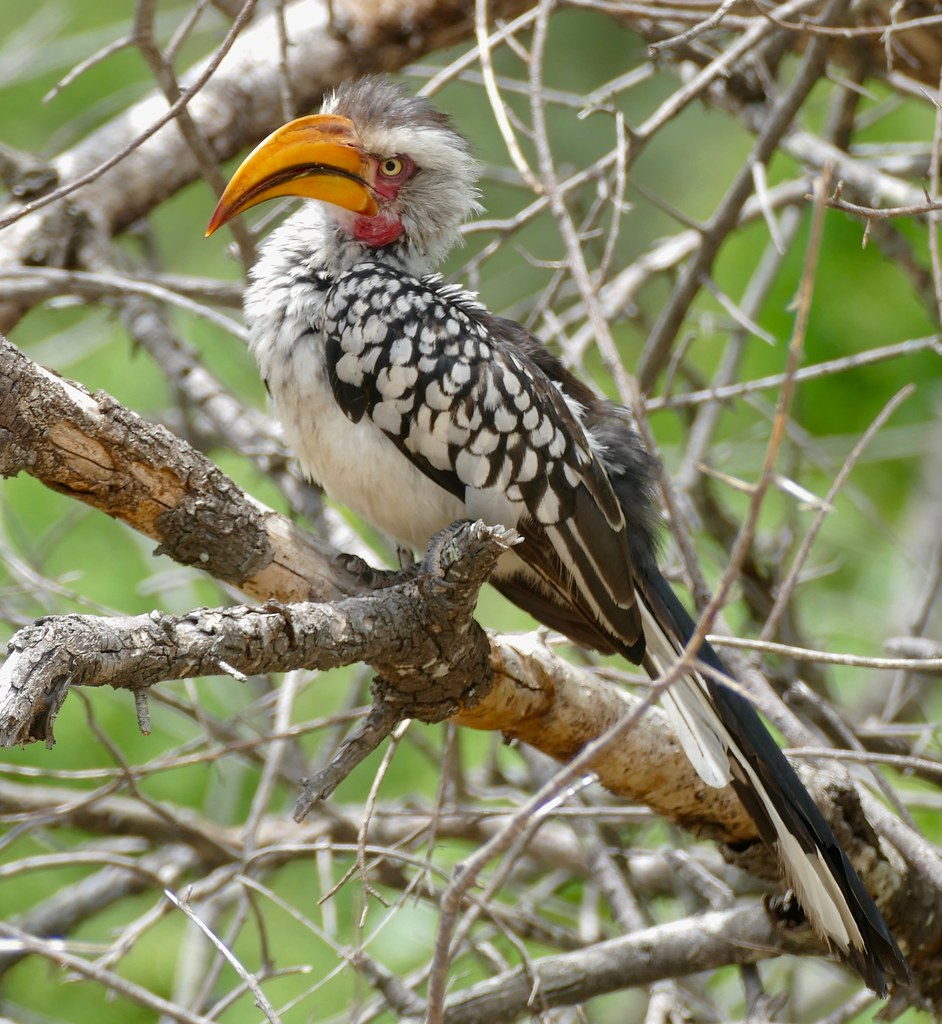
This bird is endemic to and found in Southern Africa.
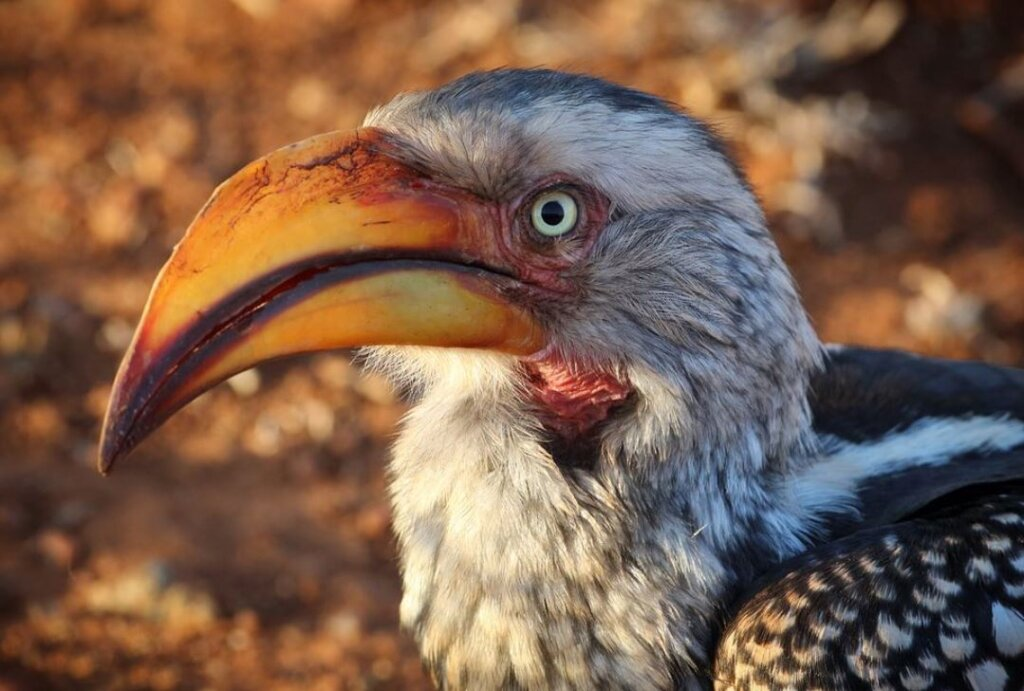
Yellow-billed Hornbill likes to live in dry thorn fields, deciduous woodlands, and scrubs where it can be seen hopping on the ground in a fairly heavy manner. It can be very tame in parks and reserves, and it is often sighted along roads.
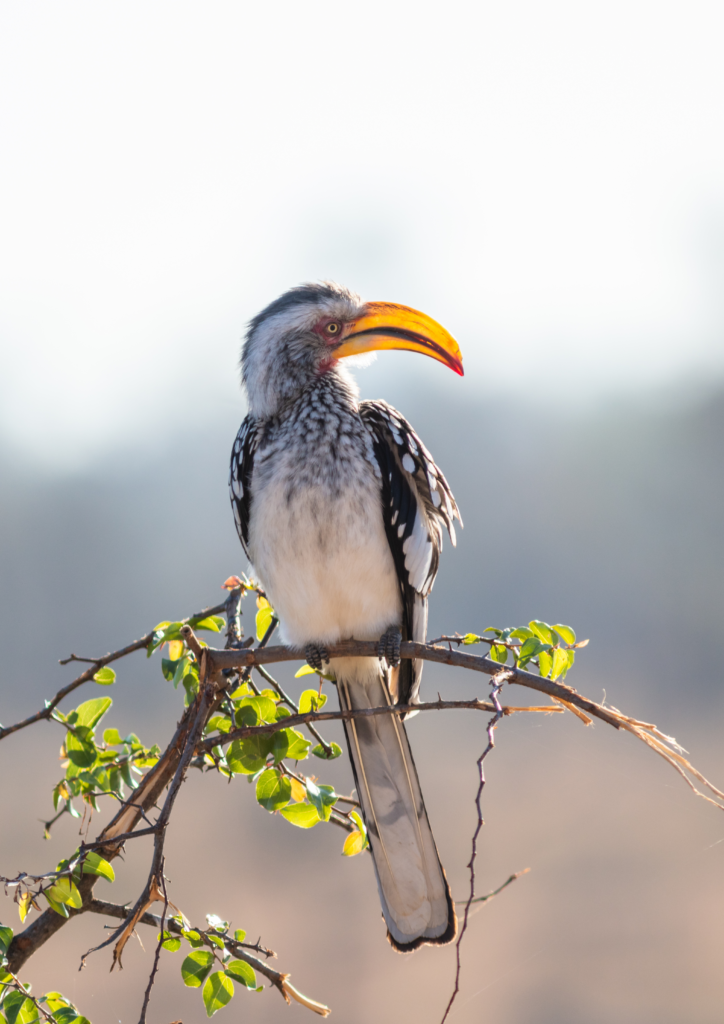
Yellow-billed Hornbill likes to dine on insects, rodents, fruits, and seeds, as well as snakes, lizards, and scorpions.
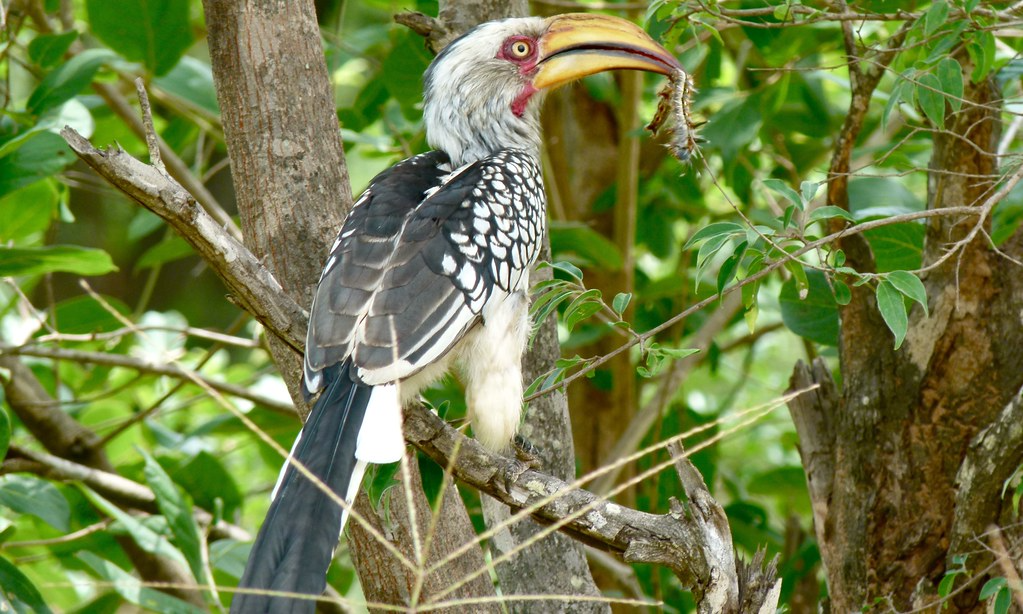
These birds build their nests in a hole in a tree where the cavity is lined with dry grᴀsses and leaves. The female lays 3 to 4 white eggs within and incubates them for around 25 days while being fed by the male. After hatching the chicks are fed by the female in the hole for three weeks with regurgitated food. The female then leaves the nest, and the young reseal the hole themselves. They stay 40 to 45 days more in the nest, fed by both parents. When they fledge, they perch for a few days in the tree on the nest site, moving their wings before taking off.
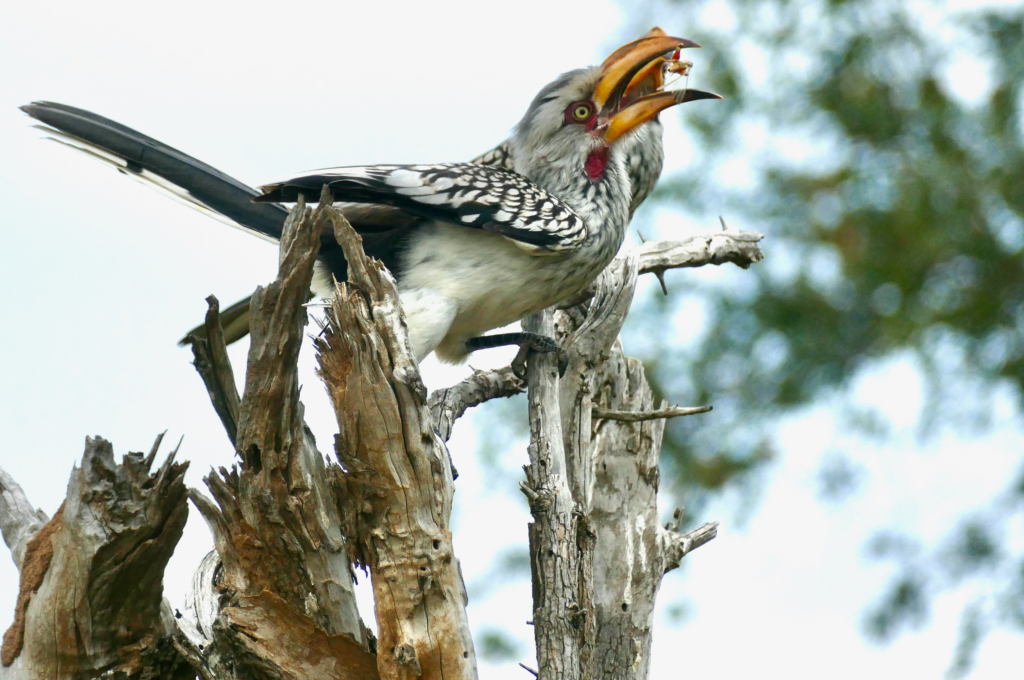
Yellow-billed Hornbill is common and widespread in South Africa, as well as in National Kruger Park.
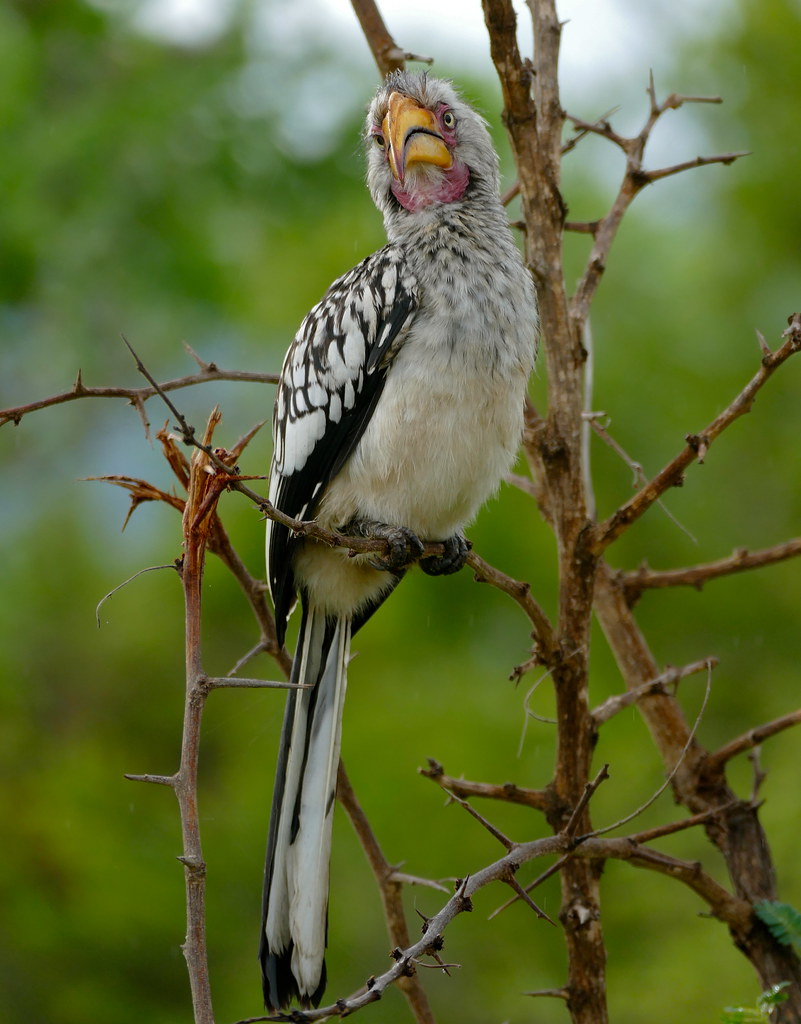
YOU CAN WATCH AND LISTEN TO THIS BIRD RIGHT HERE BELOW:





